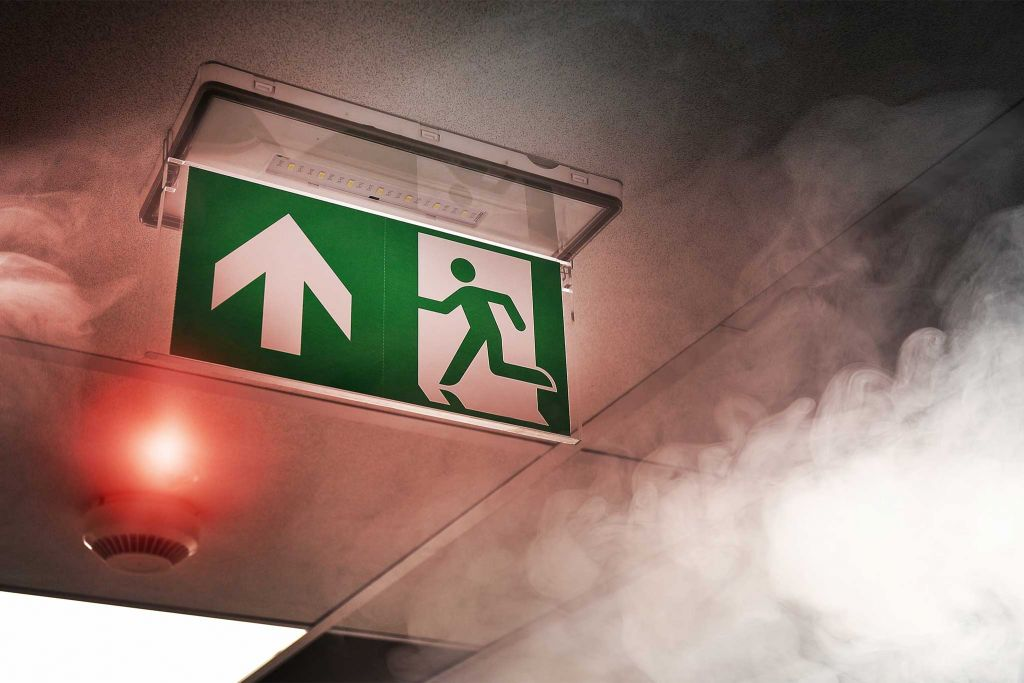In the realm of building safety, the integration of emergency lighting with fire alarm systems represents a critical synergy. This blog explores the seamless coordination between these two essential components, highlighting their collaborative role in enhancing occupant safety during emergencies. We will delve into the functionalities, benefits, and considerations involved in integrating emergency lighting with fire alarm systems, emphasizing their combined effectiveness in guiding evacuations and mitigating risks. For expert insights and services related to Emergency Lighting Inspection and Test Certificate, ensuring your systems are compliant and reliable, visit our recommended provider.
Understanding Fire Alarm Systems and Emergency Lighting
Fire Alarm Systems: Fire alarm systems are designed to detect and alert building occupants to the presence of fire or smoke. They consist of detectors, alarms, control panels, and notification devices such as horns, strobes, or speakers. When triggered, these systems initiate evacuation protocols and notify emergency responders.
Emergency Lighting Systems: Emergency lighting systems activate during power outages or emergencies, ensuring that critical areas such as escape routes, stairwells, and exits remain illuminated. They include emergency exit signs, battery-operated lights, and backup generators to provide continuous lighting in dark or low-light conditions.
Integration of Emergency Lighting with Fire Alarm Systems
1. Activation Synchronization
One of the primary benefits of integrating emergency lighting with fire alarm systems is synchronization in activation:
- Simultaneous Response: When a fire alarm is triggered, integrated systems ensure that emergency lights activate immediately. This synchronized response minimizes delays in providing essential illumination for safe evacuation.
- Enhanced Visibility: Early activation of emergency lighting helps occupants navigate through smoke-filled or poorly lit areas, reducing confusion and enhancing overall evacuation efficiency.
2. Comprehensive Coverage
Integrated systems ensure comprehensive coverage of safety measures throughout the building:
- Strategic Placement: Emergency lighting is strategically positioned based on fire alarm system zoning and evacuation plans. This placement ensures that all critical paths and areas are adequately illuminated, including staircases, corridors, and exits.
- Redundancy: Backup power sources, such as generators or battery systems, support both fire alarm and emergency lighting systems during extended power outages. This redundancy is crucial for maintaining operational continuity and ensuring uninterrupted safety measures.
3. Clear Communication and Guidance
During emergencies, clear communication and guidance are essential for safe evacuation:
- Audible and Visual Signals: Fire alarm systems emit audible alarms and visual signals (e.g., flashing lights or strobes) to alert occupants. Integrated emergency lighting enhances these signals by illuminating evacuation routes and exit signs, guiding individuals toward safe egress points.
- Emergency Signage: Illuminated exit signs and directional indicators provided by emergency lighting assist occupants in identifying primary and alternative evacuation routes. This visual guidance reduces panic and promotes orderly evacuation procedures.
4. Regulatory Compliance and Standards
Integrating emergency lighting with fire alarm systems helps buildings comply with safety codes and standards:
- National and Local Regulations: Building codes and fire safety regulations often mandate the integration of emergency lighting with fire alarm systems to ensure comprehensive emergency preparedness.
- Testing and Maintenance: Integrated systems require regular testing and maintenance to verify proper functionality. Compliance with testing protocols helps maintain system reliability and readiness for emergencies.
Considerations for Integration
1. System Compatibility
When integrating emergency lighting with fire alarm systems, compatibility between components is essential:
- Unified Control Panels: Centralized control panels or systems management software facilitate seamless integration and monitoring of both fire alarms and emergency lighting.
- Interoperability: Ensure that emergency lighting systems can interface with various types of fire alarm systems, including addressable and conventional systems, to support effective operation and coordination.
2. Design and Installation
Proper design and installation practices optimize the effectiveness of integrated systems:
- Placement and Coverage: Design emergency lighting layouts based on building occupancy, layout complexity, and anticipated evacuation routes. Ensure adequate coverage to eliminate dark spots and facilitate clear visibility.
- Wiring and Power Supply: Coordinate with electrical contractors to ensure proper wiring and power supply for integrated systems. Consider factors such as voltage requirements, backup power sources, and circuit protection to maintain system reliability.
3. Training and Awareness
Occupant training and awareness are crucial components of effective emergency response:
- Emergency Procedures: Educate building occupants on fire evacuation procedures, including the use of emergency lighting and fire alarm signals. Conduct regular drills to reinforce evacuation protocols and familiarize occupants with exit routes.
- Emergency Contact Information: Display emergency contact information and evacuation instructions prominently near exits and throughout the building to facilitate swift response and communication during emergencies.
Benefits of Integration
1. Enhanced Safety and Efficiency
By integrating emergency lighting with fire alarm systems, buildings enhance overall safety and evacuation efficiency:
- Reduced Response Time: Immediate activation of emergency lighting ensures timely evacuation guidance, reducing the risk of injury or confusion among occupants.
- Improved Visibility: Illuminated evacuation routes and exit signs provide clear guidance, even in adverse conditions such as smoke or darkness, enhancing occupant awareness and confidence during evacuations.
2. Operational Continuity
Integrated systems support operational continuity during emergencies:
- Minimized Disruptions: Backup power sources for emergency lighting and fire alarm systems mitigate the impact of power outages, allowing buildings to maintain essential operations and safety measures.
- Regulatory Compliance: Compliance with fire safety regulations and building codes demonstrates commitment to occupant safety and minimizes potential legal liabilities related to emergency preparedness.
Conclusion
In conclusion, the integration of emergency lighting with fire alarm systems represents a proactive approach to building safety and emergency preparedness. By synchronizing activation, ensuring comprehensive coverage, and facilitating clear communication and guidance, integrated systems enhance occupant safety, mitigate risks, and support operational continuity during emergencies. Building owners, facility managers, and safety professionals should prioritize the design, installation, and maintenance of integrated systems to comply with regulations, optimize safety measures, and foster a resilient built environment capable of effectively responding to fire emergencies. For expert guidance on ensuring compliance and safety, consider partnering with EICR Cert, a trusted provider of landlord safety certificates, If you want to stay updated with posts like this, please follow us on EROME.

















